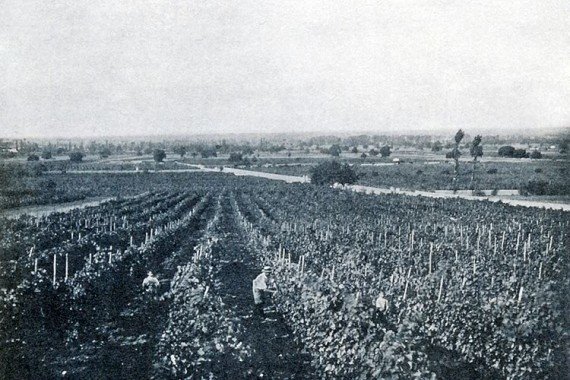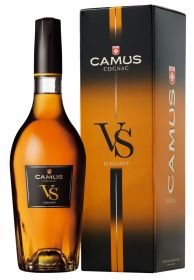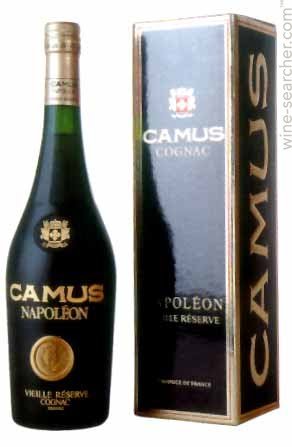Shortly about cognac.
Hi guys which of us do not love good cognac?
And what history of this strong drink?

The vineyards of Poitou produced wines that were appreciated in countries bordering the North Sea. They were transported on on Dutch ships, which had come seeking the salt from the coast. As early as the Middle Ages, the Charente River gave birth to a mentality favouring international trade. Indeed, this navigable river was nicknamed the “walking Path” by the Romans, for it provided coastal ships easy access to the heart of the Poitou-Charentes. From this period on, vineyards spread progressively deeper into the country, to the Saintonge and Angoumois regions. The city of Cognac was already distinguishing itself for its wine trade, in addition to its salt storage activities dating back to the 11th century.

During the Renaissance, commerce experienced a significant boom. People began to travel longer distances and more frequently. The Dutch, very active traders who were called upon by Henri IV to help drain the Marais Poitevin (The marshlands of the Poitou region), were fond of the region’s goods: salt, Angoulême paper and Cognac wines. Indeed, the Dutch vessels would come to Cognac and the ports of the Charente in search of the famous wines from the « Champagne

In the 16th century, the Dutch decide to distill the region’s wines to better preserve them. Dutch knowledge of the art of distillation encouraged them to distill the wines upon arrival in Holland. Indeed, the region’s low-alcohol wines suffered from the long voyage overseas and distillation allowed preserving them. The result was a success. They named it “brandwijn”— burnt wine which would become “brandy”, a spirit made from wine. They drank it mixed with water. Later, the Dutch decided it was more economical to have the wine distilled where it was produced, reducing the volume to transport. It was then that they installed the first distilleries in the region. They required the stills be made out of copper from Amsterdam. This was one of the first technology transfers in history.

At the beginning of the 17th century, double distillation makes its appearance in the region, which will enable the product to travel as a stable spirit, much more concentrated than the “brandwijn.” The first stills, installed in the Charente by the Dutch, would be progressively modified; the French gradually mastered and improved the technique. Until the beginning of the 17th century, distillation consisted of only one heating, which obtained the ”brouillis,” a liquid drunk mixed with aromatic herbs. Legend has it that double distillation was invented by the Chevalier de la Croix Maron, Lord of Segonzac, a pious man who dreamt that Satan was trying to damn his soul. In his dream, he saw himself in the Devil’s cauldron, but his faith was so deeply anchored in his soul that it resisted the first “cooking”. To achieve his ends, the Devil was forced to “cook” it again. When he woke up, the Chevalier had the idea of extracting the “soul” of eau-devie with a second distillation. This is how the legend on the origin of the discovery of double distillation for Cognac eauxde-vie was perpetuated in the region. Delays in loading the boats, resulted in the discovery that the spirit improved with age in oak casks made from wood from the neighbouring Limousin forest and that it could be drunk straight. The first Cognac house was established in 1643 : Augier.
Starting at the end of the 17th century and more markedly during the next century, the market began to take shape and Cognac companies were created in the main cities of the region. These merchants, mostly from the British Isles, collected eaux-de-vie from local growers and sent them off to the countries of Northern Europe (Martell 1715, Rémy Martin 1724, Delamain 1759, Hine 1763, Hennessy 1765, Otard 1795…). Regular trade quickly developed with European buyers and new relations developed with two new markets: America and the Far East.
In the 19th century, France witnessed seven political regimes and two revolutions, leaving the country with a certain sense of instability.Periods of economic liberalism alternated with periods of protectionism. It was during this century that many of the Cognac houses were established (Bisquit 1819, Courvoisier 1843, Royer 1853, Meukow 1862, Camus, Hardy 1863…) At the time, France was drawing its resources from its colonial conquests, which pushed back the first industrial revolution in France until after Napoleon’s abdication. During the 19th century, Cognac shipping experienced a real burst in growth. (Going from a little more than 36,000 hl In volume in 1799 to more than 478,000 hl in 1879). The growth was erratic and while Cognac shipments took a plunge after the French Revolution, they reached new heights in 1807. On the other hand, Napoleon’s continental blockade went hand-in hand with the collapse of Cognac sales as of 1808. It would not be until 1860, with the signing of a free trade agreement between England and France, driven by Napoleon III, that Cognac sales would take off. By 1879 they had tripled, from less than 150,000 hl in 1860. In the middle of the 19th century, Cognac houses began to ship the spirit in bottles rather than casks, in order to promote their “brand”. This new form of trade in turn gave birth to related industries: glassmaking (indeed, in 1885 Claude Boucher began working on mechanizing bottle manufacturing procedures at the St Martin glass factory in Cognac), case, cork-making and printing. In 1877, the vineyards covered 282,667 hectares (an area larger than Luxembourg

Nietzsche said: “What doesn’t kill me, makes me stronger”. The vineyards were replanted with American rootstocks immune to phylloxera. Traditional varieties (Colombard, Folle Blanche, etc.) were weakened by the grafting process and were gradually replaced by the more resistant Ugni Blanc, now used for more than 98% of Cognac production. La législation du Cognac se met en placeLegislation to preserve longstanding local use is put in place : 1st May, 1909: Geographic production zone is delimited. As of 1936, Cognac is recognised as an “Appellation d’Origine Contrôlée” (Controlled Appellation of Origin). In 1938, regional Appellations (crus) are delimited. 1946: Birth of the Bureau National Interprofessionnel du Cognac During World War II, the “Wine and Eaux-de-Vie Distribution Bureau” is created to protect Cognac stocks. With the liberation of France in 1946, this body was replaced by the Bureau National Interprofessionnel du Cognac, which joined together with the Station Viticole in 1948. All stages in Cognac production are henceforth subject to regulations aimed at establishing production rules and protecting this product of everincreasing fame.But there is enough history . What is Cognac?
Cognac is a brandy distilled from white wine and produced in the vicinity of Cognac. According to the official site for Cognac Tourism, it is defined as: The grape which is harvested comes exclusively from a white variety (ugni blanc). The wine is then distilled in special Charentais stills. The “heart” of the second distillation will become cognac after having aged in oak barrels for a minimum of 2 1/2 years, after which it can be sold on the market. The main categories obtained from the blending of eaux-de-vie of different ages and different growth areas are:
*** and V.S.
minimum age of the youngest eau-de-vie used in the blend must be 2 1/2 years

V.S.O.P.
4 1/2 years. Very Superior Old Pale

Napoléon and X.O.
6 1/2 years

Each company, in order to obtain the uniqueness of its categories of cognac, uses eaux-de-vie which are much older than the minimum requirement.

Cognac is an alcohol whose special characteristics depend on four conditions :
The vines
80 000 hectares (200 000 acres) of vines, unique climatic conditions, the soil and the proximity of the sea make the Charente region “a happy chance of nature, a lucky exception”.
Double distillation
Double distillation in Charentais pot stills.
Ageing
The ageing of cognac can only take place in barrels made of oak from the Limousin or Tronçais forests. In fact the eau-de-vie will only become cognac after a slow ageing process in oak specially selected for its capacity to transfer the tanins when in contact with the alcohol, thus giving it colour and “bouquet”.
Blending
The blending operation and the know-how of the “maître de chai” are handed down from generaton to generation.
Enjoying Cognac:
- First, it is necessary to choose a proper wineglass. It is recommended that you use a tulip shaped glass.
- Pour 20-25 ml of cognac pour into the wineglass and heat in the palm of your hand for 8-10 minutes.

Savoring Cognac
Look
Take a sniff placing your nose at the edge of the glass and inhale. Swirl the glass and sniff again. In cognac there are many scents to detect, such as: floral scents like violets, iris, rose; fruit scents like pear, cherry, apricot, plum, fig, quince, grapefruit, jasmine, chestnut, orange zest, nut, or peach. Cognac pairs beautifully with chocolate or coffee.
Sip
Take a sip, let the flavors dance on your tongue, swirl it about your mouth, let the wine warm on the palate before taking another. Enjoy the sensation of this special wine fill your head.
A luxurious evening awaits with a snifter of cognac and an espresso!
Note:
If you are going to blend a cognac for cocktails, use a VS or VSOP.

Derive pleasure, but without fanaticism!!!
Sources:
http://www.pediacognac.com
http://eatlovesavor.com
Thanks.
коньяк опасный напиток . печень после него болит
Ну пост больше об истории, чем популяризации коньяка